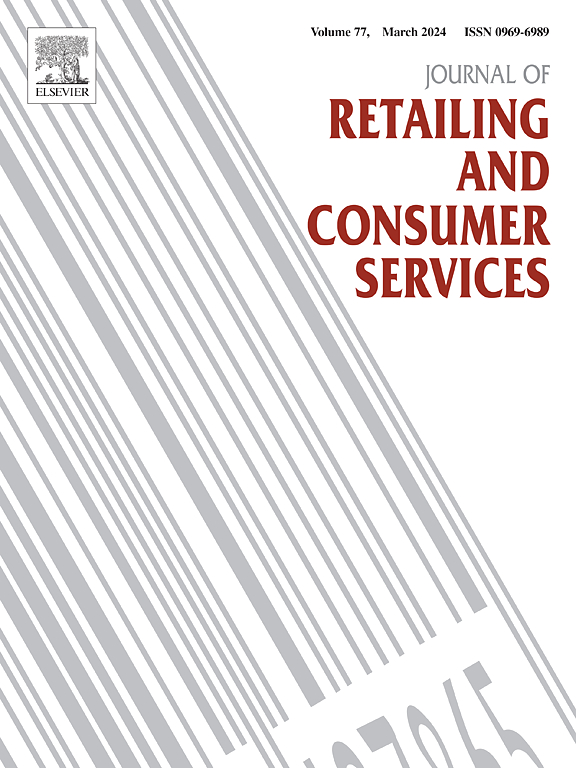观点还是点赞?利用社交文本在移动社交电子商务中提供更有效的建议:解释层次的视角
IF 13.1
1区 管理学
Q1 BUSINESS
Journal of Retailing and Consumer Services
Pub Date : 2025-07-28
DOI:10.1016/j.jretconser.2025.104419
引用次数: 0
摘要
社交推荐是社交电子商务的重要组成部分,在消费者决策过程中起着举足轻重的作用。考虑到移动设备上社交媒体参与的特点,本研究的重点是优化伴随说服性信息的社交反馈(即文本)的设计和呈现,以促进购买。在我们的语境中,副文本指的是围绕正文的元素,比如社交媒体上的“观点”、“喜欢”、“表情符号”或“关注者”。我们探讨了不同的文本(即观点与喜欢)如何影响消费者的信息处理。根据解释水平理论,我们进行了三个实验:内隐关联测试(研究1),测量感知沉浸、抽象和态度清晰度的被试间实验(研究2),以及操纵副文本和社会距离的2 × 2因子设计(研究3)。前两个实验揭示了“观点”和高级解释之间的认知关联,以及“喜欢”和低级解释之间的认知关联。此外,将反馈类型与社交距离相结合,我们发现展示朋友的点赞比展示人群的点赞更能促进购买,而展示观点则相反。本研究为研究人员和实践者在推进移动社交商务推荐系统方面提供了有价值的见解。本文章由计算机程序翻译,如有差异,请以英文原文为准。
Views or likes? Utilizing social paratexts to make recommendations more effective in mobile social E-commerce: Construal level perspective
Social recommendation, a key component of social e-commerce, plays a pivotal role in consumer decision-making processes. Considering the characteristics of social media engagement on mobile devices, this study focuses on optimizing the design and presentation of social feedback (i.e., paratexts) accompanying persuasive messages to promote purchases. In our context, paratexts refer to elements surrounding the main text, such as the “views”, “likes”, “emoji” or “followers” on social media. We explore how different paratexts (i.e., views versus likes) affect consumer information processing. Drawing on Construal Level Theory, we conducted three experiments: an Implicit Association Test (Study 1), a between-subjects experiment measuring perceived immersion, abstraction, and attitude clarity (Study 2), and a 2 × 2 factorial design manipulating paratexts and social distance (Study 3). The first two laboratory experiments reveal a cognitive association between “Views” and high-level construal, as well as “Likes” and low-level construal. Moreover, integrating feedback type with social distance, we find that showing friends' likes lead to more purchases than presenting the crowd's likes, whereas the reverse holds for views. This research provides valuable insights for researchers and practitioners in advancing recommender systems for mobile social commerce.
求助全文
通过发布文献求助,成功后即可免费获取论文全文。
去求助
来源期刊
CiteScore
20.40
自引率
14.40%
发文量
340
审稿时长
20 days
期刊介绍:
The Journal of Retailing and Consumer Services is a prominent publication that serves as a platform for international and interdisciplinary research and discussions in the constantly evolving fields of retailing and services studies. With a specific emphasis on consumer behavior and policy and managerial decisions, the journal aims to foster contributions from academics encompassing diverse disciplines. The primary areas covered by the journal are:
Retailing and the sale of goods
The provision of consumer services, including transportation, tourism, and leisure.

 求助内容:
求助内容: 应助结果提醒方式:
应助结果提醒方式:


